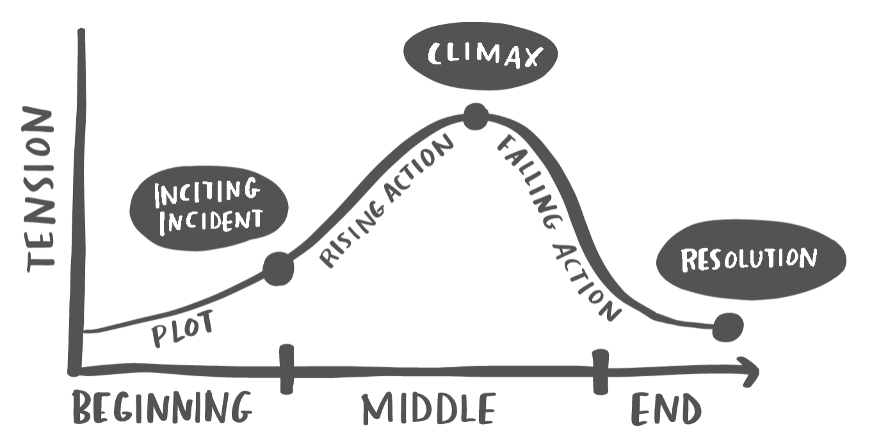Let’s Unpack ‘Evidence-based Storytelling’

Soon after I started this business 15 years ago, I had a pretty big revelation: that storytelling can be done across media. What I mean, is that it is possible to tell stories through data, or through an image, or even in the way a website is navigated. This realization opened up many different avenues for Ensemble Media, and we continue to use a wide variety of tools to tell important stories.
This time though, our focus is a term that is getting a lot of attention: evidence-based storytelling. Sounds concrete–but also a bit nebulous? Well, let’s unpack it!
Evidence by itself doesn’t always lead to understanding. Incorporating storytelling and story structure can give evidence meaning.
The word “storytelling” is often equated with anecdotes, individual accounts—but a storytelling approach can be used to understand qualitative data, too. Stories, after all, activate both the language processing and experiential/empathetic parts of our brain. This means while engaging with a story, our whole brain is put to work. This leads to better engagement, improved retention of information and ultimately, action.
Evidence-based Storytelling Components
Context is integral to storytelling; how a problem or question came to be and why that problem requires research is essential. Just as critical: why the problem/question is important. Sharing this information helps your audience understand your purpose and, effectively, how you see the world.
Characters can include researchers and research participants—they can even include the research tools in use. When considering characters, don’t forget your audience—with whom do they identify? What and how much does the audience need to know about the characters to understand and care about your purpose?
Stories and structure go hand-in-hand. Effective stories have a narrative arc. In evidence-based storytelling, the start of the arc, or “hook” begins with the problem or compelling question motivating the investigation. Sometimes this is called the “inciting incident”. Tension starts with this hook/incident. When developing that topic or question, consider the audience to be served—what is important to them? What makes them care about the hook? How much detail do they want/need?
The narrative arc encounters one or a series of challenges, building tension along the way. The main challenge is met with complications, which may lead to conflict. In evidence-based storytelling, this tension might be due to existing knowledge or evidence that is being tested, or new data being gathered and the complexity that emerges, or your core argument and how new evidence sheds light on that argument.
The climax in evidence-based storytelling is the significant turning point that changes the outcome. This could simply mean that the data is processed and reveals results. It could also mean that the research question must be revised, expanded, or that the methodology must change.
The resolution is the set of events that bring the story to a close. This could be the findings gleaned from the data, or the experience shared by the characters, or the recommendations made from those findings to take action.
Designing for Dissemination
The medium is the other critical piece to storytelling. Stories are more than graphs and charts about assessment results. Evidence-based stories share the decisions that were made, what changed, and what was discovered.
Think through the best way to engage your audience BEFORE you begin collecting evidence. Think about your primary and secondary audiences. Would a short video, a simple blurb, photographs, or some combination of these help them understand the context, the characters, and the evidence being presented? If you’re not sure, document your process just in case!
Would a data visualization support the story or detract from it? Can the audience make sense of the visual on its own or does it need to be presented? Remember, the purpose of visualization is insight, not just interest. In other words, “cool graphic!” should be accompanied by, “ah—I get it!
“Numbers have an important story to tell. They rely on you to give them a clear and convincing voice.”
– Stephen Few, Data Visualization Expert
Looking to draw out the story from the evidence? We can help! Email me at stephanie@ensemble-media.com.
Illustration by Catherine Madden.
